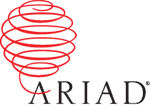Request Demo
Last update 08 May 2025
Incyte Biosciences International SARL
Subsidiary Company|Switzerland
Subsidiary Company|Switzerland
Last update 08 May 2025
Overview
Tags
Other Diseases
Neoplasms
Skin and Musculoskeletal Diseases
Small molecule drug
Monoclonal antibody
Disease domain score
A glimpse into the focused therapeutic areas
No Data
Technology Platform
Most used technologies in drug development
No Data
Targets
Most frequently developed targets
No Data
| Top 5 Drug Type | Count |
|---|---|
| Small molecule drug | 3 |
| Monoclonal antibody | 3 |
Related
8
Drugs associated with Incyte Biosciences International SARLTarget |
Mechanism PD-1 inhibitors |
Active Org. |
Originator Org. |
Active Indication |
Inactive Indication |
Drug Highest PhaseApproved |
First Approval Ctry. / Loc. United States |
First Approval Date22 Mar 2023 |
Target |
Mechanism FGFR1 antagonists [+2] |
Active Org. |
Originator Org. |
Active Indication |
Inactive Indication |
Drug Highest PhaseApproved |
First Approval Ctry. / Loc. United States |
First Approval Date17 Apr 2020 |
Mechanism Bcr-Abl inhibitors [+1] |
Active Org. |
Originator Org. |
Active Indication |
Inactive Indication |
Drug Highest PhaseApproved |
First Approval Ctry. / Loc. United States |
First Approval Date14 Dec 2012 |
23
Clinical Trials associated with Incyte Biosciences International SARLNCT06218082
Vitiligo Registry for Adults and Children in the UK (VIRTUAL-UK)
Vitiligo is the most common depigmentation disorder affecting around 1% of the population worldwide. Fifty two percent of patients develop vitiligo before the age of 20 and around 80% develop vitiligo before the age of 30 years old.1 Vitiligo often presents in childhood and tends to be a lifelong disease, requiring prolonged courses of phototherapy.
Currently no national or international registry for patients with vitiligo exists. Individual dermatologists maintain a database of such patients, however no coordinated efforts have been made to combine these individual registries into a broader national registry. Finally, recently published British Association of Dermatologists (BAD) guideline for the management of vitiligo, recommended the development of a national registry for people with vitiligo undergoing systemic or light therapy to identify outcomes and safety.
Currently no national or international registry for patients with vitiligo exists. Individual dermatologists maintain a database of such patients, however no coordinated efforts have been made to combine these individual registries into a broader national registry. Finally, recently published British Association of Dermatologists (BAD) guideline for the management of vitiligo, recommended the development of a national registry for people with vitiligo undergoing systemic or light therapy to identify outcomes and safety.
Start Date15 May 2025 |
Sponsor / Collaborator |
NCT05359692
Phase 2, Open-Label, Multicenter Study of INCAGN01876 in Combination With Immunotherapy in Participants With Recurrent or Metastatic Head and Neck Squamous Cell Carcinoma
The purpose of this study is to determine the safety, tolerability, efficacy, PK and pharmacodynamics of INCAGN01876 when given in combination with retifanlimab. The study will consist of 2 parts: a safety lead-in part (Part 1) followed by a dose expansion part (Part 2).
Start Date01 Mar 2023 |
Sponsor / Collaborator |
NCT04968106
Randomized Phase II Study of Neoadjuvant Chemotherapy Plus Retifanlimab (INCMGA00012) in Patients With Selected Sarcomas
Multicenter, prospective, open-labeled, 2-arm, non-comparative randomized phase II trial to assess the antitumor activity of retifanlimab (INCMGA00012) in association with neoadjuvant chemotherapy
Start Date07 Dec 2022 |
Sponsor / Collaborator Institut Bergonié [+1] |
100 Clinical Results associated with Incyte Biosciences International SARL
Login to view more data
0 Patents (Medical) associated with Incyte Biosciences International SARL
Login to view more data
55
Literatures (Medical) associated with Incyte Biosciences International SARL05 Nov 2024·Blood
The Impact of Ponatinib on Pregnancy Outcomes
Author: Apperley, Jane ; Chelysheva, Ekaterina ; Rizzo, Federica ; Patos, Petros ; Abruzzese, Elisabetta ; Bardey-Kanaan, Mouna ; Nguyen, Nhan Thanh ; Kelly, Deborah ; Soichez, Romuald
05 Nov 2024·Blood
Ponatinib Safety Profile: An Analysis of 10 Years of Real-World Experience
Author: Rizzo, Federica ; Rea, Delphine ; Patos, Petros ; García Gutiérrez, Valentín ; Jabbour, Elias ; Bardey-Kanaan, Mouna ; Nguyen, Nhan Thanh ; Soichez, Romuald ; Kelly, Deborah
01 Nov 2024·ESMO Open
Response to: Cholangiocarcinoma patients with FGFR2 fusions/rearrangements but primary refractory to pemigatinib: the real challenge?
Letter
Author: Abou-Alfa, G K ; Veronese, M.L. ; Abou-Alfa, G.K. ; Veronese, M L ; Vogel, A. ; Vogel, A ; Zhen, H. ; Zhen, H
2
News (Medical) associated with Incyte Biosciences International SARL30 Jul 2024
Despite today’s pipeline changes, oncology remains another area of focus for Incyte.
For the second quarter in a row, Incyte has used its earnings results to significantly slim down its early-stage pipeline as the Jakafi-maker channels its resources toward “high potential impact programs.”The latest list of discontinued assets includes both of Incyte’s oral, small-molecule PD-L1 inhibitors that were being assessed in phase 1 trials. One of these, INCB99280, was being evaluated in an early-stage solid tumor trial, and the biotech had already set out plans for a phase 1/1b trial in KRASG12C-mutated solid tumors in combination with Bristol Myers Squibb’s Krazati.The other scrapped PD-L1 inhibitor, dubbed INCB99318, was also in a phase 1 solid tumor trial.Also on the chopping block are a couple of LAG3 drug candidates. One of these is a LAG-3 monoclonal antibody dubbed INCAGN2385 that was being developed with Agenus. The other was a bispecific anti–PD1 and anti–LAG-3 antibody dubbed INCA32459 that was being developed with Merus and had undergone a phase 1 study in select advanced malignancies.Finally, Incyte has removed a TIM-3 monoclonal antibody dubbed INCAGN2390, which was another product of the Merus collaboration. INCAGN2390 was designed to “potently block TIM-3 to reinvigorate T and NK cells and reduce immunosuppression by regulatory T cells (Tregs),” according to Agenus’ website. Incyte said the changes, unveiled this morning in the company’s second-quarter earnings results, were part of a “strategic review of its pipeline with an increased focus on high potential impact programs.”“In R&D, we completed a strategic review of our pipeline and have further intensified our focus on clinical programs that we believe can be transformational for patients,” CEO Hervé Hoppenot explained in the release.Among the company’s highest priority candidates are povorcitinib, a selective oral JAK1 inhibitor that has already demonstrated its worth in phase 2 trials in both hidradenitis suppurativa and vitiligo so far this year. The company has also imported over a pair of budding immunology and inflammation candidates as part of its $750 million acquisition of Escient Pharmaceuticals in April.Despite today’s pipeline changes, oncology remains another key area of focus for Incyte, which will continue to channel resources into NCB123667—a CDK2-selective small molecule inhibitor in a phase 1 solid tumor trial—among others.The company’s third priority area is myeloproliferative neoplasms and graft-versus-host disease, where the biotech singled out three candidates.This morning’s pipeline changes follow a similar strategy to Incyte’s previous quarterly earnings back in May, when the biotech scrapped six drugs—one in a rare form of anemia and five in various cancers.

Phase 1AcquisitionPhase 2ImmunotherapyPROTACs
21 Oct 2021
SINGAPORE, Oct. 21, 2021 /PRNewswire/ -- Independent pharmaceutical company Specialised Therapeutics Asia Pte Ltd (ST) will partner with Incyte Biosciences International Sàrl, the Swiss-based affiliate of Incyte (NASDAQ:INCY), to launch and distribute two new medicines for its haematology and oncology portfolios, tafasitamab (sold as Monjuvi® in the United States and Minjuvi® in Europe) and pemigatinib (Pemazyre®).
Under the terms of the agreement, Incyte will be responsible for the development, manufacture and supply of both products and ST will be responsible for regulatory, distribution and local marketing related activities in Australia, New Zealand and Singapore.
Pemigatinib is approved in the United States, Europe and Japan for the treatment of adult patients with locally advanced or metastatic cholangiocarcinoma with a fibroblast growth factor receptor 2 (FGFR2) fusion or rearrangement that have progressed after at least one prior line of systemic therapy.
Tafasitamab in combination with lenalidomide is approved in the United States and Europe for the treatment of adult patients with relapsed or refractory diffuse large B-cell lymphoma (DLBCL) who are not eligible for autologous stem cell transplant (ASCT).
ST Chief Executive Officer Mr Carlo Montagner said the new products were synergistic with the company's strong oncology and haematology portfolios, and the new agreement was further endorsement of ST's regional capabilities.
"We are proud to have been selected to partner with a world-leading biotech of Incyte's calibre and look forward to these important products in our key regions," he said.
"Both pemigatinib and tafasitamab address strong unmet needs in rare patient populations. We have extensive experience and a successful track record of working with clinicians and other stakeholders to bring innovative therapies to small patient populations where there is high unmet clinical need. Our teams look forward to working closely with Incyte to ensure all eligible patients have access to these therapies at the earliest opportunity."
Incyte CEO Hervé Hoppenot said the latest collaboration and partnership provided an important strategic opportunity to further serve the global oncology community, offering innovative new medicines to patients with high unmet needs in Australia, New Zealand and Singapore.
"ST's expertise in these regions, navigating complex regulatory channels to bring new therapies and technologies to patients with rare cancers, is complementary to our own commitment to positively impact the lives of patients with serious unmet medical needs," he said. "We look forward to a successful and mutually beneficial partnership, working together with a shared goal of improving patient outcomes."
Regulatory activities for both products are currently in progress.
Ends.
About Specialised Therapeutics
Headquartered in Singapore, Specialised Therapeutics Asia Pte Ltd (ST) is an international biopharmaceutical company established to commercialise new therapies and technologies to patients throughout South-East Asia, as well as in Australia and New Zealand. ST and its regional affiliates collaborate with leading global pharmaceutical and diagnostic companies to bring novel, innovative and life-changing healthcare solutions to patients affected by a range of diseases. Its mission is to provide therapies where there is an unmet need. The company's broad therapeutic portfolio currently includes novel agents in oncology, haematology, neurology, ophthalmology and supportive care. Additional information can be found at .
About Tafasitamab
Tafasitamab is a humanized Fc-modified cytolytic CD19 targeting monoclonal antibody. In 2010, MorphoSys licensed exclusive worldwide rights to develop and commercialize tafasitamab from Xencor, Inc. Tafasitamab incorporates an XmAb® engineered Fc domain, which mediates B-cell lysis through apoptosis and immune effector mechanism including antibody-dependent cell-mediated cytotoxicity (ADCC) and antibody-dependent cellular phagocytosis (ADCP).
In January 2020, MorphoSys and Incyte entered into a Collaboration and License agreement to further develop and commercialize tafasitamab globally. Monjuvi® is being co-commercialized by Incyte and MorphoSys in the United States. Incyte has exclusive commercialization rights outside the United States.
In the United States, Monjuvi® (tafasitamab-cxix) is approved by the U.S. Food and Drug Administration in combination with lenalidomide for the treatment of adult patients with relapsed or refractory DLBCL not otherwise specified, including DLBCL arising from low grade lymphoma, and who are not eligible for autologous stem cell transplant (ASCT). This indication is approved under accelerated approval based on overall response rate. Continued approval for this indication may be contingent upon verification and description of clinical benefit in a confirmatory trial(s).
In Europe, Minjuvi® (tafasitamab) received conditional approval, in combination with lenalidomide, followed by Minjuvi monotherapy, for the treatment of adult patients with relapsed or refractory diffuse large B-cell lymphoma (DLBCL) who are not eligible for autologous stem cell transplant (ASCT).
Tafasitamab is being clinically investigated as a therapeutic option in B-cell malignancies in several ongoing combination trials.
Minjuvi® and Monjuvi® are registered trademarks of MorphoSys AG. Tafasitamab is co-marketed by Incyte and MorphoSys under the brand name Monjuvi® in the U.S., and marketed by Incyte under the brand name Minjuvi® in the EU.
XmAb® is a trademark of Xencor, Inc.
About Pemigatinib
Pemigatinib (Pemazyre®) is a kinase inhibitor indicated in the United States for the treatment of adults with previously treated, unresectable locally advanced or metastatic cholangiocarcinoma with a fibroblast growth factor receptor 2 (FGFR2) fusion or other rearrangement as detected by an FDA-approved test. This indication is approved under accelerated approval based on overall response rate and duration of response. Continued approval for this indication may be contingent upon verification and description of clinical benefit in a confirmatory trial(s).
In Japan, Pemazyre is approved for the treatment of patients with unresectable biliary tract cancer (BTC) with a fibroblast growth factor receptor 2 (FGFR2) fusion gene, worsening after cancer chemotherapy.
In Europe, Pemazyre is approved for the treatment of adults with locally advanced or metastatic cholangiocarcinoma with a fibroblast growth factor receptor 2 (FGFR2) fusion or rearrangement that have progressed after at least one prior line of systemic therapy.
Pemazyre is a potent, selective, oral inhibitor of FGFR isoforms 1, 2 and 3 that, in preclinical studies, has demonstrated selective pharmacologic activity against cancer cells with FGFR alterations.
Pemazyre is marketed by Incyte in the United States, Europe and Japan. Incyte has established various license or distribution agreements for Pemazyre in certain geographies and retains all other rights to develop and commercialize pemigatinib outside of the United States.
Pemazyre is a trademark of Incyte.
CollaborateAntibodyAccelerated Approval
100 Deals associated with Incyte Biosciences International SARL
Login to view more data
100 Translational Medicine associated with Incyte Biosciences International SARL
Login to view more data
Corporation Tree
Boost your research with our corporation tree data.
login
or

Pipeline
Pipeline Snapshot as of 18 Dec 2025
The statistics for drugs in the Pipeline is the current organization and its subsidiaries are counted as organizations,Early Phase 1 is incorporated into Phase 1, Phase 1/2 is incorporated into phase 2, and phase 2/3 is incorporated into phase 3
Phase 2 Clinical
5
1
Phase 3 Clinical
Other
2
Login to view more data
Current Projects
| Drug(Targets) | Indications | Global Highest Phase |
|---|---|---|
Pemigatinib ( FGFR1 x FGFR2 x FGFR3 ) | Bile Duct Neoplasms More | Phase 3 |
Verzistobart ( TIM3 ) | Squamous Cell Carcinoma of Head and Neck More | Phase 2 |
Tuparstobart ( LAG3 ) | Squamous Cell Carcinoma of Head and Neck More | Phase 2 |
Retifanlimab ( PD-1 ) | Squamous Cell Carcinoma of Head and Neck More | Phase 2 |
Parsaclisib ( PI3Kδ ) | Marginal Zone B-Cell Lymphoma More | Phase 2 |
Login to view more data
Deal
Boost your decision using our deal data.
login
or

Translational Medicine
Boost your research with our translational medicine data.
login
or

Profit
Explore the financial positions of over 360K organizations with Synapse.
login
or

Grant & Funding(NIH)
Access more than 2 million grant and funding information to elevate your research journey.
login
or

Investment
Gain insights on the latest company investments from start-ups to established corporations.
login
or

Financing
Unearth financing trends to validate and advance investment opportunities.
login
or

AI Agents Built for Biopharma Breakthroughs
Accelerate discovery. Empower decisions. Transform outcomes.
Get started for free today!
Accelerate Strategic R&D decision making with Synapse, PatSnap’s AI-powered Connected Innovation Intelligence Platform Built for Life Sciences Professionals.
Start your data trial now!
Synapse data is also accessible to external entities via APIs or data packages. Empower better decisions with the latest in pharmaceutical intelligence.
Bio
Bio Sequences Search & Analysis
Sign up for free
Chemical
Chemical Structures Search & Analysis
Sign up for free


